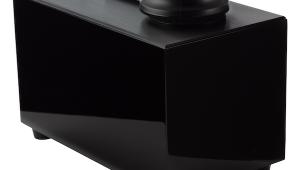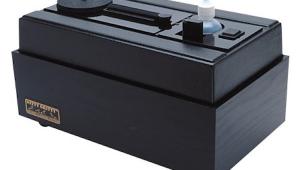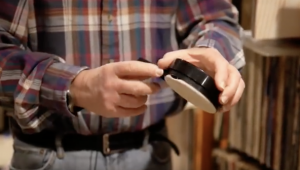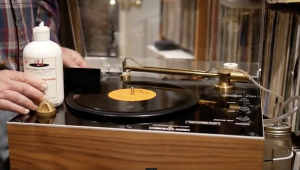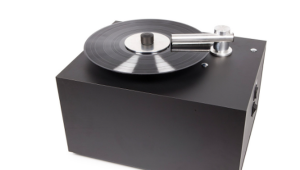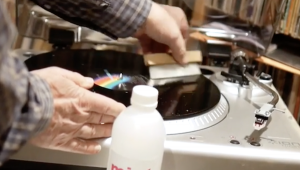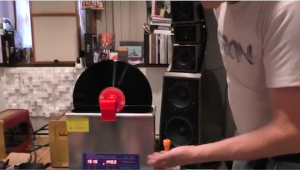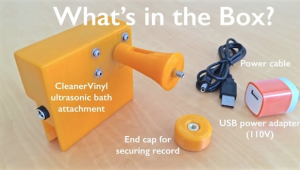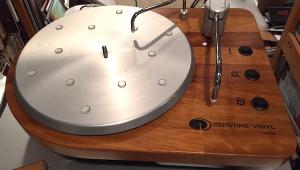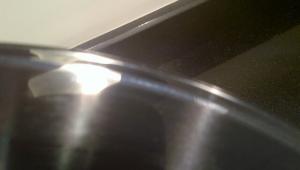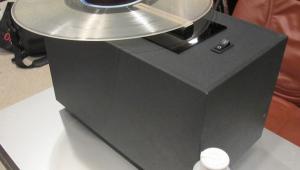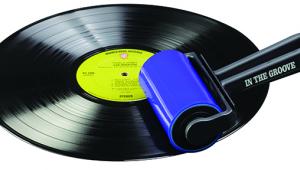Would like to see how this compares to a HumminGuru for similar money.
Same Time, Both Sides Cleaning Helps Make the Record Doctor X Vacuum Record Cleaning Machine a Serious Next-Gen Player in the VRCM Field
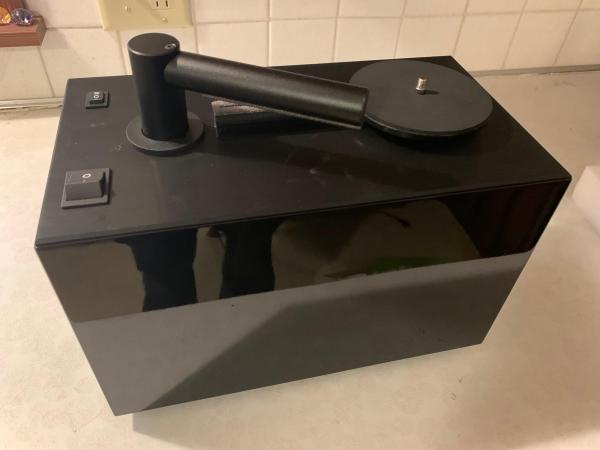
I don’t know about you, but I have a stack (or two) of LPs that have long been put aside with the recurring inner monologue reminder, “I must clean these albums before I ever play them again,” attached. Other, newer, unplayed, and better-cared-for LPs of mine do indeed get ritualistically cleaned before I spin them, of course — and, needless to say, cleaning our LPs is something we all really should be in the habit of doing as a matter of course.
In recent months, a number of quite vibrant record cleaning discussions have taken place here on AP in various comment threads, and all that impassioned discourse very much helped solidify our decision to resume reviewing record cleaning machines (RCMs) on a more consistent basis — but where to start? Well, toward the end of last year, we reported on the introduction of the Record Doctor X vacuum record cleaning machine (a news item you can read right here), and, given the prior positive experiences with earlier models in the RD series, I was intrigued enough to want to test it out for myself. (I should also point out that both the Record Doctor VI and V were reviewed here on AP in years past, and you can find them under this banner, after you scroll down a bit.)
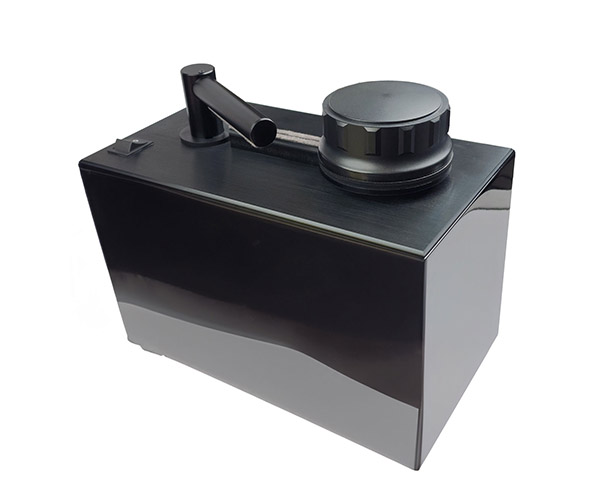
Besides the design carryovers of such RD series features like the vacuum motor, cleaning strip, and storage tank, I really liked the idea that the Record Doctor X (which I’ll now refer to as the RDX moving forward) simultaneously cleans both sides of a record, which thankfully helps minimize excessive LP handling during the cleaning process.
Other key new features for the RDX include a bi-directional turning motor that alleviates the need to turn the record by hand — a major plus for those of us who have gotten, well, quite cranky at having to crank it up all the time while using certain RCMs, V-related or otherwise. Another new RDX feature is a 5in screw-down clamp that both secures and protects an LP’s label. The clamp’s gasket shields said label from fluid during the record cleaning process — another upfront plus. Finally, the RDX’s vacuum swing arm vacuums the top surface of an LP while the bottom gets vacuumed by way of a slot under the sweeper strip. In other words, “less fuss, less muss” is the overarching RDX design concept here, and we very much approve.
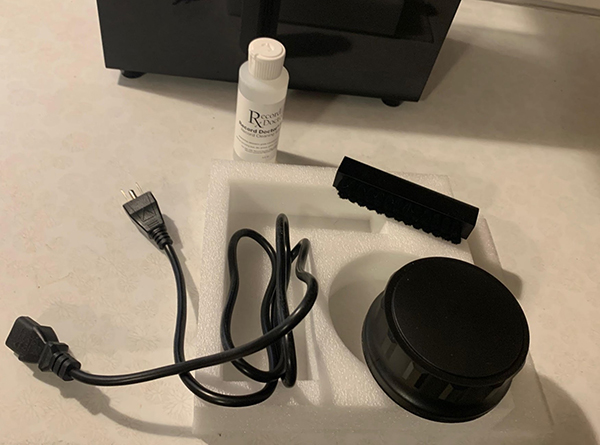
Items included with the RDX VRCM — which measures 13 x 8.66 x 7in (w/h/d) — are the Record Doctor Goat Hair Brush, a 4oz fluid-applicator bottle of RxLP pre-mixed cleaning solution, sweeper strips, a 6ft power cord, and illustrated cleaning instructions. Some of us have our own preferred brush-and-fluid options and methodology, of course, but for the purposes of this particular review, I decided to see how the provided RDX supplies fared instead. (I will more than likely mix and match what brushes, fluids, and related implements I use in future reviews.)
As for the cost, the RDX VRCM has an SRP of $599.95, and it comes in either a black or carbon fiber finish. For comparison, the aforementioned predecessor Record Doctor VI currently goes for $299.95 (down from $329.95) and the still available V runs between $220-$250, depending where you look. While the price gap may give some of you pause, keep in mind other VRCMs go for much more, such as the Pro-Ject VC-S3 ($799) and the VPI HW 16.5 ($999.99).
If you want to get yourself additional/replacement RDX accessories, Goat Hair brushes will run you $29.95 apiece. Bottles of the pre-mixed RxLP solution come in a variety of amounts, including 8oz ($14.95), 16oz ($19.95), and 32oz ($29.95), and there’s also a 32oz concentrate option as well ($19.95). Finally, additional sweeper strip kits go for $19.95 each (and you’ll definitely need those at some point).
With all this in mind, and knowing I was going to imminently review the RDX VRCM not too long after the calendar turned to 2024, I began sifting through those above-mentioned need-to-clean LP stacks, and selected a few choice long-unplayed longplayer favorites to get the vacuum treatment, along with earmarking some still-sealed new releases for good measure.
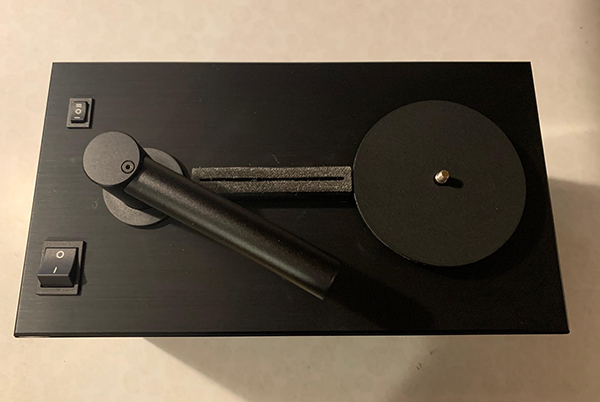
Setup Time & Cleanup Time
As promised, the RDX VRCM arrived on my doorstep double-boxed, with the RDX’s sturdy, eco-friendly, recyclable box that bypasses the use of Styrofoam inside a well-packed cardboard transport box. Unboxing everything inside was a snap. The core RDX unit itself, the black version, was bagged and covered accordingly (albeit with a tiny spindle hole poking slightly through the top), and each accessory sans the twist-tied power cord came in a resealable plastic bag.
The slim foldover/foldout broadsheet user’s guide tells it to us straight by announcing, “we know reading manuals can be a drag, but don’t worry, this manual is short and sweet.” (True that!) I followed the initial “best results” suggestion and placed the RDX on a sturdy surface, a porcelain counter. I inserted the springy end of the vacuum swing arm into its circular slot on the topside, and aligned my first LP on the spindle. Instantly eradicating any thoughts of endless cranking-related muscle-memory tinges from my head and right arm, I clicked on the rotation motor switch, watched the LP begin to rotate clockwise, and then applied the initial snail-trail thin line of RxLP fluid across that first LP, using the supplied brush to spread it evenly across the grooves. Then I turned the rotation motor off, flipped the LP over, and repeated the process.
If you’ve done this sort of thing before, you already have a feel for how gently to spread the fluid and how much to “lean into” the brushing, as you don’t want your LPs to bow at all during the spread since a portion of it has nothing underneath it while it’s in rotation mode. Record-cleaning newbies may need/want to go through a fluidless brush-practice rotation or two to get the hang of the light touch required here.
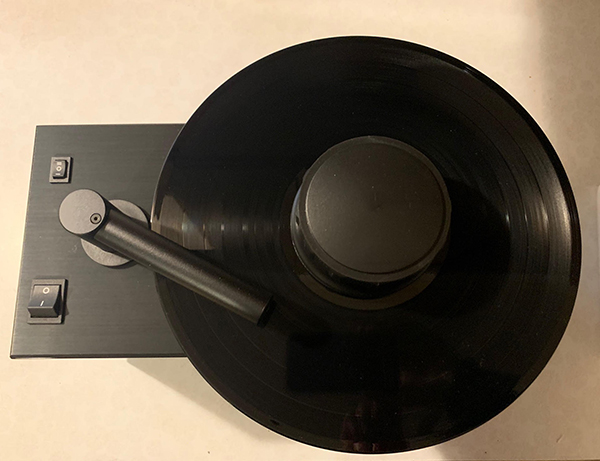
Next, I added the clamp, screwing it down gently but firmly onto the LP label. I flipped the rotation motor back on, switched on the vacuum motor for the first time, and lightly pushed down on the vacuum swing arm until it contacted the LP’s surface. RDX suggests letting the LP spin for two or three full rotations before reversing the motor direction for two more rotations in the other direction, or until the LP is dry. (You should be able to eyeball when it’s dry.) Once you switch the vacuum off, the arm lightly springs up off the LP surface, leaving just enough room for you to lift the record off the spindle without it touching anything in between as you do so.
Note that the entirety of the LP label will be covered fully by the clamp during the vacuuming portion of the process, so have a designated sightline, etched numbering/lettering sequence, or coded phrase in the dead wax — and/or add a demarcation on top of the clamp in case you’re not all that skilled at full-rotation counting. Also, since the RDX vacuum is still about as noisy/shrill as my family’s Shark vacuum cleaner, I popped in some ear protection each time I used it (and you should too). VRCM noise levels do vary, and though the RDX is less annoyingly so than other/previous models, we do hold out hope for the Record Doctor team to come up with some kind of vac-noise governor for future iterations.
Now that I’ve walked you through how I did my first RDX cleaning session along with a few simple hacks, you can watch the above YouTube clip to see each step in action to get the full hang of it. (I’ll wait.) We good? Okay, since we’re all duly prepped and know how to do the RDX locomotion together, let’s see how some of my LP cleaning choices fared on the VRCM clean ’n’ test bench.
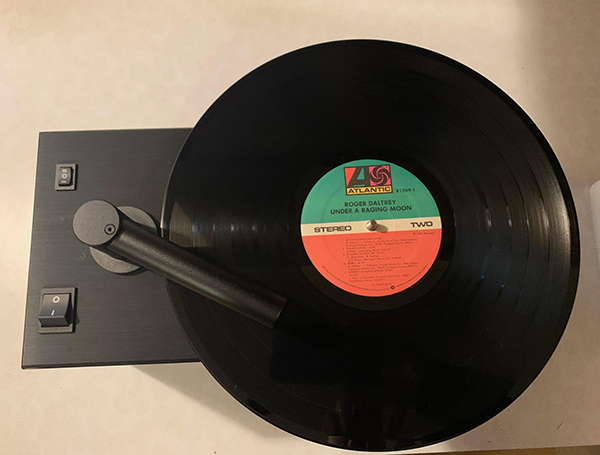
Listening Sessions
(and More Than 88 Lines About Them)
First up from my belated cleaning stacks was Roger Daltrey’s September 1985 solo album Under a Raging Moon (Atlantic 7 812691-1). This was a cherished LP I hadn’t dropped the needle on for quite some time, and also one I had neglected to move from its original paper lyrics/credits inner sleeve to its intended Vinyl Styl transfer portal (ah, the best laid plans). There was indeed a bit of grime and sleeve dust on this LP that needed clear attention, making Under a Raging Moon the perfect virginal RDX candidate — as in, it was the first LP I dropped onto the spindle.
Following the Moon LP’s dual-side RDX cleaning session, I immediately cued up the album’s final song and no-holds-barred title track, “Under a Raging Moon” (Side Two, Track 5). It’s Daltrey’s deeply heartfelt and spot-on tribute to his late bandmate, the ever-wily Who drummer Keith Moon (albeit with its lyrics having been co-written by Julia Downes and John Parr), and it’s easily the cut I had played the most on this LP over the last 30-plus years. If the RDX was ever going to come up short in its duties, this would be the early litmus test.
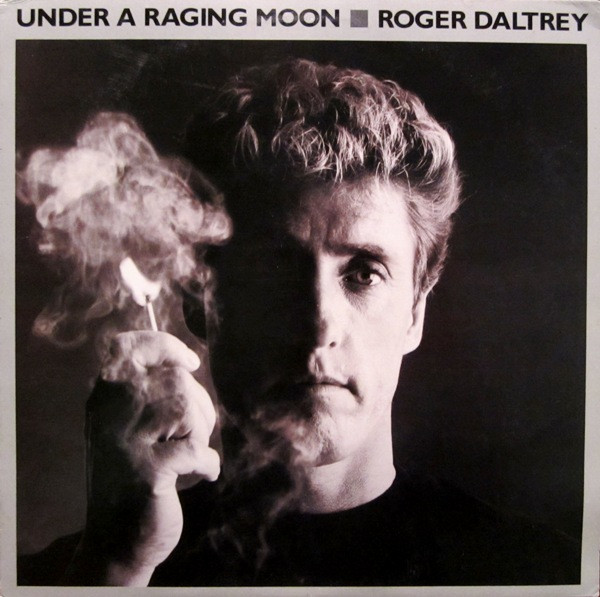
I’m happy to report there were no issues here with “Under a Raging Moon” — only clean, intense, soundfield-challenging playback. The opening synth lines — somewhat reminiscent of the signature EMS VCS 3 oscillations on The Who’s “Won’t Get Fooled Again” — looped around the soundfield with of-era purpose. Daltrey gets right to the heart of the matter with the initial lines of the first chorus, “Do you remember me? / Like I remember you,” and it was like reconnecting with an old friend I hadn’t heard from in quite a while, checking back in from between the grooves — and without any ticks nor pops while doing so, no less.
Naturally, I was eagerly awaiting the extended drum solo section, which features seven name drummers of the day taking a few bars each to pay tribute to Keith Moon the player, commencing with Pretenders kitsman Martin Chambers and moving in the field from the far right to the far left, with each segment separated by a thundering synthy whoosh across the stage (courtesy producer/sequencer Alan Shacklock) to signify the player (and channel) change. The character of each drummer — Chambers, Roger Taylor, Cozy Powell, Stewart Copeland, Zak Starkey, Carl Palmer, and Mark Brzezicki — came through with no crackly impediments and instead displayed much individual character in the way of the shifting dynamics. That was key for me, as I do recall experiencing some surface noise agita the last few times I played this song, leading me directly to the “you really gotta clean this LP before the next time, dude!” inner monologue I failed to heed until now. “Raging Moon” was all the rage following its RDX experience.
I wasn’t yet done with this album, however. I flipped Moon over and went right to the middle track, “Breaking Down Paradise” (Side One, Track 3). This song presents more than its share of volume swells and it consistently ping-pongs its instrumentation between the left and right channels. The critical recurring highlight of “Paradise” for me is drummer Mark Brzezicki’s spirited octoban playing. The octoban is a tube tom-tom (a.k.a. the tube tom) that give off a tribal feel that can sometimes be heard in his work with Big Country. Besides that, the ricocheting, chucka-chucka programming during parts of each chorus also rang true, as no distortion, crackles, or pops were in evidence there either. This spirited “Paradise” didn’t break down in the least.
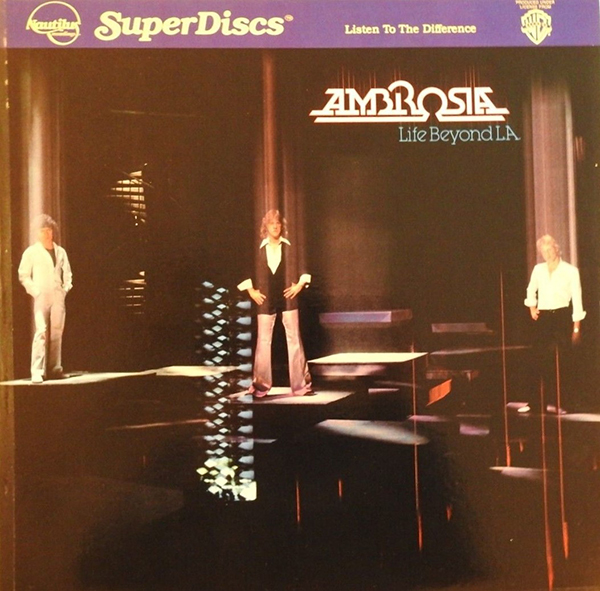
Next, I rolled back a decade to the 1970s and pulled out an LP that most decidedly divides fans of the prog-fusion collective Ambrosia — namely, their third Warner Bros. effort, August 1978’s Life Beyond L.A.. Me, I still retain much affinity for this album, which straddles the band’s considerably more progressive-leaning roots and their soon-enough-to-follow pop-chart confection phase (fueled by this album’s No. 3 chart hit earworm, “How Much I Feel”).
The version of Life Beyond L.A. I own is the half-speed-mastered Nautilus SuperDisc edition (NR 23), an LP I’ve maintained inside its provided Super Sleeve bag — but also one I hadn’t cleaned in, well, a dog’s age (or three) either. That negligence clearly showed when I initially slid the LP out of the SS bag, as some sleeve dust and residual grime were more visible than I was expecting, having not seen this LP unsheathed for a few years. What this signified to me was that I had, at some point, left it unattended in an open-air setting for way too long prior to rightfully returning it to the Super Sleeve. (Had I inadvertently placed it on top of, shudder, an adjacent paper sleeve intended for the recycle bin?) That said, those niggly artifacts were actually something that made this particular L.A. LP another great candidate for getting the full RDX vacuum-scrub treatment.
I repeated the cleaning steps in full, watching the arm yoke intently like seeing an LP street sweeper at work. Once the full cycle was complete, I wasted little time in cueing up the title track, “Life Beyond L.A.,” (Side 1, Track 1) first. The opening synth wash that also runs alongside the subtle piano work in the verses is decidedly ’70s in its feel, and the gnarly instrumental breaks after each of David Pack’s wafty “you know I do” line readings eventually lead into the aggressive, minute-long clavinet/guitar tradeoff solo section — and all of it was as clean a playback as I’d hoped.
While I did take a cursory spin through “How Much I Feel” (Side 1, Track 5) and again reconnected with my appreciation for the vocal harmony blend on the phrase “that’s how much” but still felt the song fades out way too quickly, I was more interested in flipping L.A. over and getting to the album-ender, “Ready for Camarillo” (Side 2, Track 5) instead. I’d forgotten how much I dug (and still dig) this track. The precision of Burleigh Drummond’s chest-thumping drum intro, the “storm” keyboard chords, Joe Puerta’s layered lead vocals and low-end attack, Pack’s channel-summed guitar solo, and Drummond’s full-channel insistent heartbeat drum return near the end never wavered or wilted. Thanks to the RDX, revisiting Life Beyond L.A. was more than well worth the trip.
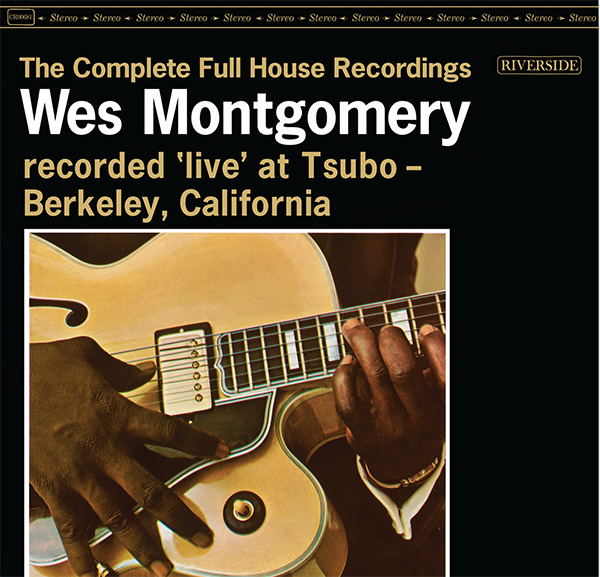
From there, I cleaned quite a few more LPs with the RDX to garner how it handled a fuller cross-section of new and old vinyl alike. Here’s a selection of what stood out to me, post-vac.
4) What a joy it was to experience the signature tone of Wes Montgomery’s now restored guitar solo — not to mention those mindmeld piano comps from Wynton Kelly and drum breaks by Jimmy Cobb — on “Full House,” the title track to my previously unopened copy of the newly expanded (and semi-soon to be separately reviewed!) 180g 3LP set The Complete Full House Recordings (Disc 2, Side C, Track 1, Craft Recordings CR00861).
2) The clarity of the triangle hits behind Joe Jackson’s lead vocals and the tap-tap-tapping right-channel percussion on the verses of “Breaking Us in Two” on my well-loved original, used copy of June 1982’s Night and Day (Day Side [a.k.a. Side 2], Track 1, A&M SP-4906).
3) The interplay between Steve Howe’s guitar and Rick Wakeman’s organ riffs, and the vocal blend amongst Jon Anderson, Chris Squire, and Howe on the recurring buildup phrase “they’ve all gone to look for” on Yes’ 10-minute version of Simon & Garfunkel’s “America,” from February 1975’s compilation LP Yesterdays (Side One, Track 1, Atlantic SD 18103).
4) The shifting character of Marc Campbell’s “mmms” and “ahhs” and the final big echo om the song title recitation at the tail end of the original version of The Nails’ “88 Lines About 44 Women” on their 1981 EP Hotel for Women (Side 1, Track 2, Jimboco CJN-111-1).
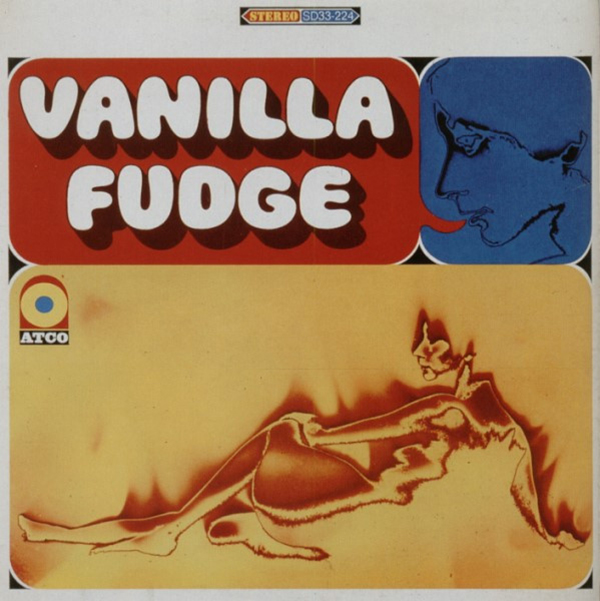
5) Mark Stein’s solo Hammond B-3 organ break circa six minutes into Vanilla Fudge’s heady reinterpretation of The Supremes’ “You Keep Me Hanging On,” on my long-unplayable and long inner-sleeveless copy of the stereo version of August 1967’s Vanilla Fudge (Side 2, Track 2, Atco SD 33-224). Now properly inner-sleeved, this LP used to suffer from a few too many pops ’n’ clicks to my liking before I relegated it to the shelves and got myself a replacement copy. I only discerned some between-track noise following “STRA (Illusions of My Childhood - Part One)” that appears as Track 1 ahead of “Hanging On” and immediately thereafter it leading into Track 3, “WBER (Illusions of My Childhood - Part Two),” all of which was much more irritating when I had initially relegated this LP to the shelves.
6) Corin Tucker’s banshee wailing followed by the amp buzz click-off that closes out “Untidy Creature,” the final track on Sleater-Kinney’s January 2024 gut-wrencher of an LP, Little Rope (Side B, Track 5, Lona Vista LVR03681). Sometimes I give pause when I’m cueing up color vinyl, but this metallic gold version of Little Rope hung in there with no issues whatsoever.
And, hey, I even had some RxLP cleaning solution left over after all that. The RDX user’s manual recommends the tank be drained into a sink after 25 LP cleaning cycles, so once I was done with my cleaning sessions for this review (not quite 25 of them, but well into the upper-teens), I popped the screw-size drain plug on the bottom of the unit, but there wasn’t much to see here, in this dribbly drainage case. I returned the plug to its rightful place and perched the RDX back onto its porcelain counter homebase for future continued and consistent daily usage.
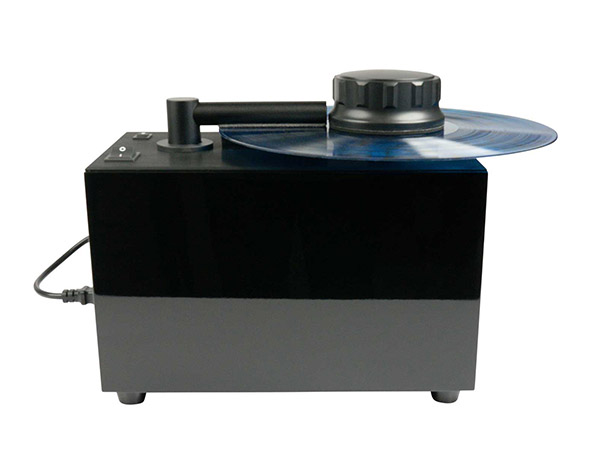
Conclusions
Needless to say, I was quite impressed by the Record Doctor X vacuum record cleaning machine’s level of performance. The RDX cleaned a wide swath of my some clean-ish, some pristine-ish, and some grimy-ish LPs as prescribed, time and again.
Naturally, there will be those who just don’t want to deal with the RDX vacuum’s noticeable noise floor, and there will also be those who will recoil at the RDX’s SRP — but its consistent cleaning performance more than backs up the price of admission, which is a few bills less than some other higher-end vacuum-centric models. Also, don’t forget the RDX does things its predecessor, the VI, is simply incapable of doing. The bottom line is, the Record Doctor X vacuum record cleaning machine is a top-notch way to get your records ready for the best, cleanest playback they — and you — deserve.
For more about Record Doctor gear and how to purchase a Record Doctor X VRCM, go here.
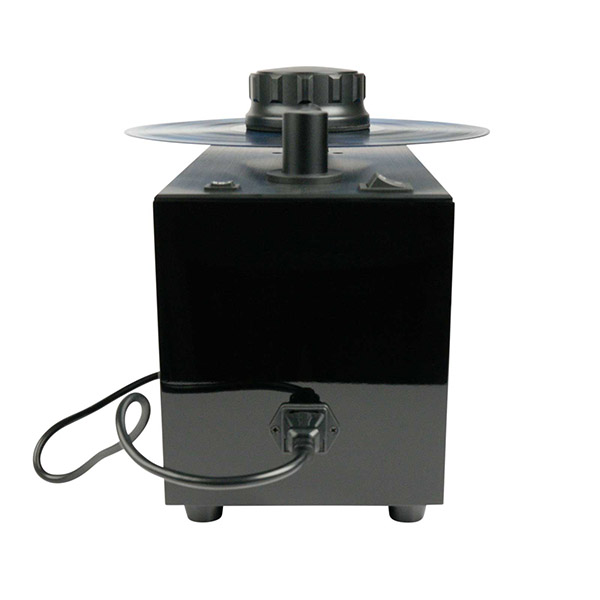
- Log in or register to post comments

I’ve been through a few RCM’s including the Humminguru, I have hoped someone would do a Professional review of the Guru. I can tell you from my experience it does a great job for the money, a couple of friends also bought one after bringing some records to clean on my Guru and were impressed with the results. I moved up to the Degritter and I like it’s “set it and forget” use but can’t say I notice any difference in the end result from the Guru.

I'm still using the Record Doctor VI and it seems a pretty hard sell for spending double the cost just for the convenience of not having to turn the record over and rotate it yourself.

I have the Mk6 and a Mk5 and the latest iteration would seem to be a convenience at best.
All three are ULTRA loud and one needs to use great earplugs if you want to keep your hearing over time; years of usage.
Thanks to Mike for speaking to the noise levels of the RD units. The whole truth is important as it is a definite annoyance / point of caution for any owner. I feel it is downplayed by AA/Pangea and results in a lack of honesty in their marketing.

Very cool of you NOT to make up stuff when you're not sure if one is better or the other. I am also looking to buy one or the other.
Did you have any issues with build quality or usage on a daily basis?

As a Degritter owner who adds a Spin Clean for the tough stuff, I agree with the comments above--we need comparisons to other systems to know if this is worthwhile. It is remarkable that so many amateur reviewers love the Humminguru, but the professionals can't bring themselves to mention it

Any possibility of a record cleaner comparison article?

I have the old fashioned one side at a time, human-powered RD. The thing I spend the most time on is: brushing the cleaning fluid into the grooves. Easily 75% of the time. Won't I still need to do that with this new model? So, when I flip the disk to brush the other side, won't fluid be dripping everywhere? Or worse, drying up before vacuumed?
To me, the beauty of the RD is the simplicity of the operation and the cost saving of using human power to spin the disk. And the effectiveness of it.
To spend more is to consider ultrasonic. I'm wary of humminguru, looking forward to your review. Kirmuss is probably my next stop.

I've used the 5 and 6 for years and I brush/treat both sides before vacuuming. I try not to use too much fluid so spillage or dripping never happens. I use the AI No. 6 which seems to be a thicker than water with its diluted enzyme solution. The No.6 is among the best reviewed and I concur.

You have about 5 minutes before the solution dries.. I vacuum it off within 1-3 minutes depending on the LP quality. If you leave it for more than 5 minutes on, yes it will dry. It can be re-activated with more fluid if need be.

Applies fluid to and vacuums both sides. No flippy, no fussy.
It's pretty pricey though...
I've had a HumminGuru for about 8 months now and after a good soak and scrub with AI #15, I dry then run through the HG (with two drops TergiKleen). Then a vacuum dry and final wash with AI #6 on the NG.
Adding the HG to my regimen ABSOLUTELY removed another level of noise.
Get yours now before a good review happens on AP and demand soars.
HumminGuru Inc., you are welcome. No charge.

Precisely what I was looking for and I almost pulled the trigger in December. I know exactly your point, the reviews are going to skyrocket price and demand soon. Dang it
Readjusting purchase schedules once again.

Good to see a RD that doesn't cause RSI in users :D
Humminguru by itself is pretty useless as a record cleaner.
But used in conjunction with hand cleaning and a vacuum machine it does a decent job.

What specifically in hand cleaning are you referring to? Spin Clean? The vacuum part after the fact is easy and already considered for myself. But what about others?
Can you give a little more input on your comments above?

On what do you base your conclusion that the HG is "pretty useless" as a record cleaner?
I've not found that to be the case when used alone.
Will be interesting to read MM's conclusions after a thorough, rigorous, scientifically certified and peer reviewed study.
Or just messing around in his listening room.

The newer Project VC-E2 mini machine is well made but unbelievably loud. Ear plugs and muffs for my 71 year old ears. Also try as I have, I could not find where they would sell an additional metal suction arm wand to swap out as I could do with the plastic one from VPI. I'm coming from 20+ years with a VPI HW-17f which required only one type of ear protection. Actually I thought ultrasonic was the next logical step from the VPI (since my time remaining may be more limited than I know) and the convenience of the Audio Desk Systeme Pro-X that would limit my participation in the process seemed ideal. What a piece of junk. A $15 aquarium pump locked inside a double layered plastic box that the company would not repair and an ultrasonic transducer that does nothing. Many threads out there on A-gon and elsewhere. Records do come out nice and shiny. Mine already were from the VPI. So over the few months of getting inside the ADS machine and acquiring the proper oem parts to repair it (no help from OEM themselves or UltraSystems here in USA), I also read and watched everything possible on ultrasonic vinyl cleaning. There remains zero actual proof that it works. MF's thread at The TA is very good but still at times misleading. Kirmuss's fairly recent video presentation in S Korea is a good summation of what are the actually verifiable results for cleaning vinyl although his full process is as he says more accurately described as a restoration. He talks about the ultrasonic machine he specifically developed and concludes that by itself it like all the others. It cannot change the laws of physics and chemistry. He has also invested in the test equipment to prove his assertions and no one else I could find has done that. His process unfortunately takes way too long for me to do all of my records. I lucked into a virtually new Upscale Audio Edition of the Kirmuss machine (#48 of 50) for half price and will use it for the records that both I and the record will benefit the most from. I have a longer discussion that I could have copied and pasted here detailing my repair work, that led to my "junk" conclusion with the ADS and a quick run down of all of the ultrasonic machines currently available from $ to $$$ (ending with the newest Clearaudio which is "sonic" not ultrasonic according to their literature) but chose not to post it at this time. I could send it by email to those interested or post it here if the author here is ok with it.


I often read complaints about the RD being very loud, but what I don’t read is a measurement. I would be shocked if out reviewers didn’t have either a real SPL meter or at least an app on their phone. At ear level, 80db? 90? How bad is it, really?

